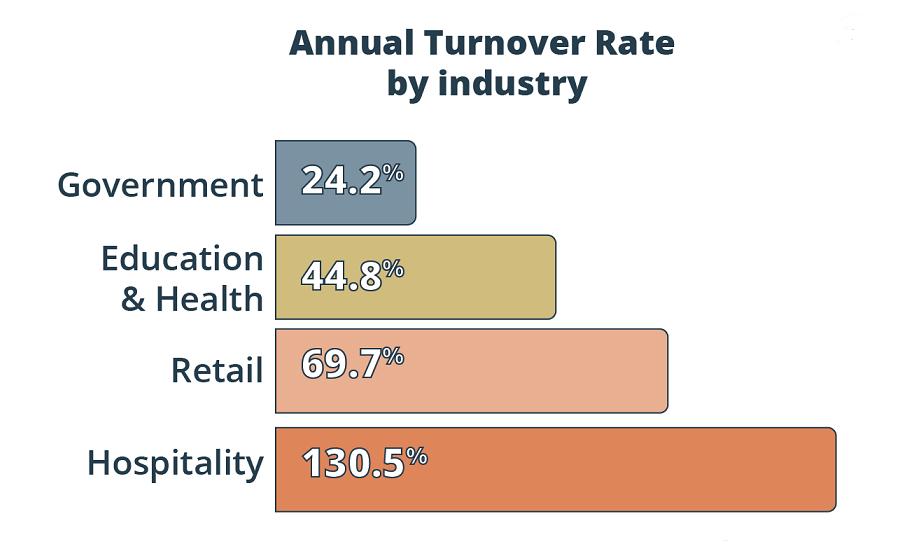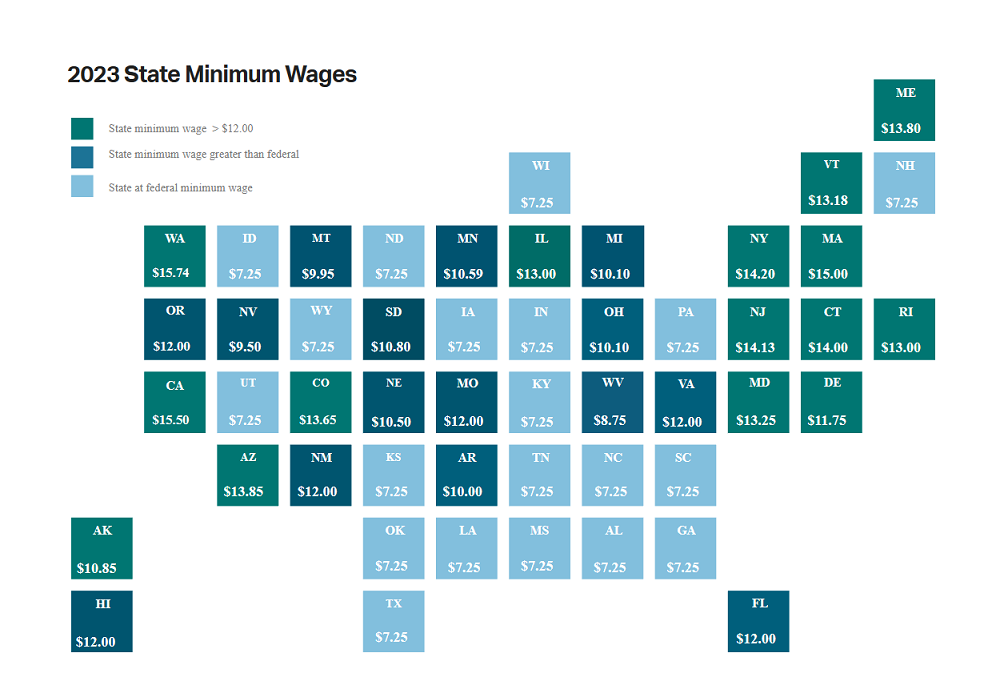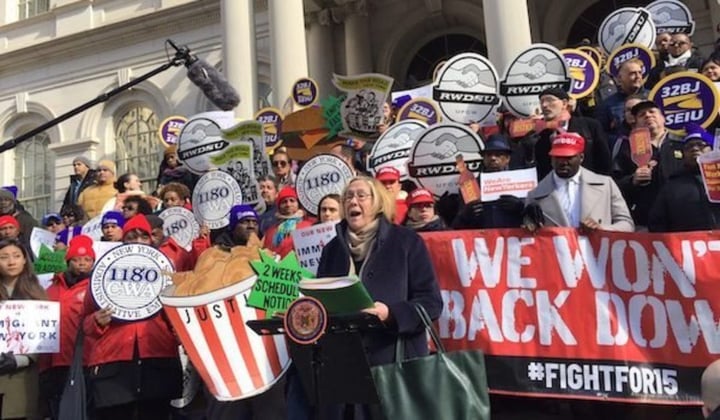
- Home
- Crunchtime Blog
- Six Ways to Manage Payroll for Multi-Location Restaurants

Six Ways to Manage Payroll for Multi-Location Restaurants
This post was contributed by Sage, a Crunchtime accounting and payroll integration partner.
Managing restaurant payroll is a complex business, and it becomes more challenging the more restaurants you have—especially if they’re based in different locations.
As well as ensuring everyone is paid the right amount at the right time, the multi-location payroll process has to factor in laws and regulations that might vary between states, cities, and countries. Errors and non-compliance can result in fines or legal action.
In this post, we’ll explore the challenges of managing payroll for multi-location restaurants, and give you some tips on how to overcome these.
Why is restaurant payroll important?
Just like in any industry, payroll is the process of calculating how much each of your employees has earned during a set period of time and paying them accordingly. Payroll managers also have to work out taxes, deductions, overtime hours, and vacation leave, and maintain accurate records.
But for restaurant owners, there’s even more to think about. Alongside nationwide laws covering employment tax, there are industry-specific laws about scheduling and reporting income from employee tips.
Payroll is an essential part of restaurant management, and it’s vital you comply with these laws and regulations to avoid fines or legal issues. For restaurant owners, integrating a payroll tool can simplify this complex process, ensuring accuracy and timeliness in paying their staff. This could significantly reduce the risk of costly errors or legal issues. You also have to make sure that payments are accurate and made on time, otherwise your employees will soon find someplace else to work.

Image sourced from hrmorning.com
Payroll challenges for multi-location restaurants
If you own several restaurants in multiple locations, the payroll process is more complex. Whether it’s a handful of independently owned eateries or a huge international chain, multi-location restaurants mean you’ll have more people to manage.
Restaurants tend to have a mix of part-time and full-time employees, and they work irregular hours, overtime, and split shifts. So, with each new branch you open, the challenge of calculating their wages multiplies.
It’s also common for restaurant employees to work in more than one role, with different rates of pay for each—and it’s tricky to keep track of hours and pay rates, especially across several locations. While a two-week pay cycle is typical in the hospitality industry, some states have specific requirements for when employees should be paid.
If you own restaurants in more than one US state, that’s not the only variation you need to be aware of. Although the Fair Labor Standards Act (FLSA) operates at the federal level (governing minimum wage, overtime pay, recordkeeping, and child labor rules), some states and municipalities have their own labor laws on top of that.
Regulations for tipped staff and tip credits also vary widely by state. Of course, restaurants that form part of an international franchise will be subject to different employment laws in different countries, and your payroll system will need to handle payments in various currencies.
For example, EU employment law is designed to protect workers’ rights throughout the EU, but the laws often operate differently in different member states.
Another challenge for multi-location restaurants is that if each one uses its own system for workforce management and payroll, information can get siloed instead of being centralized. They might have separate policies on breaks or tips, which makes it harder to calculate accurate payments.

Image sourced from resourcefulcompliance.com
Six ways to manage payroll for multi-location restaurants
So, how can you keep on top of payroll across multi-location restaurants? Here are our tips for smooth management.
1. Quit using spreadsheets
Maybe you got on perfectly well with spreadsheets when you only had one small restaurant, but as your business expands into multiple locations, Excel just isn’t going to cut it. With more employees comes more paperwork, and you don’t have the time for manual data entry and calculations.
Apart from being time-consuming, handling your payroll manually is also prone to errors. All sorts of things can go wrong—you might accidentally add an extra zero to someone’s paycheck, or duplicate records could lead to an employee being paid twice.
Mistakes such as overpaying or underpaying employees will have an impact on staff morale, productivity, and retention. Why should they perform to a high standard if you can’t even be bothered to get their paycheck right?
In the worst-case scenario, you could incur penalty fees for mismanaging payments. Plus, you don’t want your books to be a mess if you get audited. Software makes it much easier to keep accurate records and assure compliance in your state or country. For example, accounting payroll software designed to comply with mandates in the UK will help you to avoid any issues with HMRC.
2. Centralize and integrate systems
As we touched on earlier, it’s difficult to get a handle on varying working hours and rates of pay across all your restaurants if each of them is using a different system. This can lead to information going missing or figures not adding up.
Instead of disparate software for things like accounting, scheduling, and onboarding, it’s best to implement one centralized system that gathers data and enables access from all locations. You might choose an all-in-one platform, or integrate your POS, workforce management, and HR systems.
You’ll be able to see an overview of performance and expenses for all restaurants and guarantee all employee data is kept in a single secure source. You’ll know exactly who’s working for you and how much they should be earning, and you can pay them from anywhere.
 Image sourced from freepik.com
Image sourced from freepik.com
3. Stay on top of scheduling
Shift scheduling is a big challenge for multi-location restaurants, and it’s closely connected to payroll and HR. If you don’t have an overview of the schedules for each restaurant, you won’t have the right data to calculate employee wages and taxes.
And if you don’t keep accurate information about the roles your employees perform and the hours they typically work, you won’t be able to put the right staff in the right place at the right time. Employees won’t thank you if they’re called in at the last minute because of a scheduling error, or if you omit to pay them for an extra shift.
In the US, some states and cities even levy employer penalties for unexpected schedule changes. That’s another reason why a centralized system is necessary—you can see at a glance who’s working where and how much you’ll need to pay them. Staff can also log in and see schedules in advance.
Scheduling affects labor costs too. You need to know when you’ll need more staff so you can budget accordingly. For example, if one restaurant is located at a tourist spot that’s popular at certain times of the year or if there’s a big event happening near one of your branches.
4. Automate wherever possible
The challenge of scheduling brings us to our next tip, as it’s one of the elements of restaurant management that you can automate for maximum efficiency. With the right software, you can track shifts and schedule changes to make sure you comply with wage laws, including laws about overtime.
Automated payroll software can calculate the total hours worked each week, as well as vacation days. Some systems will monitor the time worked in a day and send an alert to managers if an employee exceeds their permitted hours (the same for taking mandatory breaks).

Image sourced from freepik.com
The best tools will also work out taxes and deductions, depending on your restaurant locations. Check that your software covers your specific region— for instance, if your restaurants are UK-based, you’ll need hospitality accounting software that’s set up for HMRC digital taxes, and the same goes for if you’re based in the US or Canada.
Automated software can also make direct deposits into employees’ bank accounts. This is faster than writing checks and better for your cash flow as you know exactly when the money is leaving your account.
Another handy tool is automation for expense claims. Rather than waiting for staff from multiple locations to send you their receipts, they can simply take a photo and submit it to the system. This is a quicker and more reliable method, especially if you set up automated approvals.
5. Be aware of regional variations
If your restaurants are based in different states or countries, you must familiarize yourself with the laws and regulations for each location. As we mentioned, these can vary widely—there may even be variations between cities and municipalities.
For example, some restaurant employers take a tip credit from their tipped employees (a tip credit being the maximum portion of the minimum wage that you’re not required to pay these employees), but certain US states don’t allow you to do this.
Plus, some areas now have "fair workweek" and predictive scheduling legislation, which regulates scheduling, overtime, and payment practices. It’s your responsibility to make sure that all locations are fully aware of regulations, as well as your payroll policies. Be sure to standardize procedures for tracking time and trading shifts too.
6. Let employees get involved
With the right restaurant payroll software, you can give employees extra visibility and responsibility. For example, you can let them log into your centralized system from anywhere via an employee portal, and view their contracts, rates of pay, schedules, and earnings.
They can see total earnings for the year, view upcoming paychecks with deductions, and access their end-of-year tax forms, making it easier to manage their finances. This means your payroll and HR teams won’t have to field so many questions about pay.
Staff can also submit expense claims and vacation requests for fast approval, and arrange to swap their shifts with colleagues when appropriate. You could include a communication system for this so everything’s on the record and managers can see who’s working when.
Final thoughts
The restaurant payroll process can be complicated even before you factor in multiple locations. But if you get it wrong, you could face penalties, audits, and a high staff turnover.
It’s best to streamline the entire process by using software. You can benefit from automatic payroll tax calculation and employee scheduling, plus extensive reporting capabilities to help keep an eye on labor costs.
Efficient management makes it easier to comply with region-specific labor laws such as minimum wage requirements, maintain accurate payroll records, and keep your workforce happy.
For more information about labor management, click here.
Share this post
Related


The Restaurant Operator’s Guide to Fair Workweek

